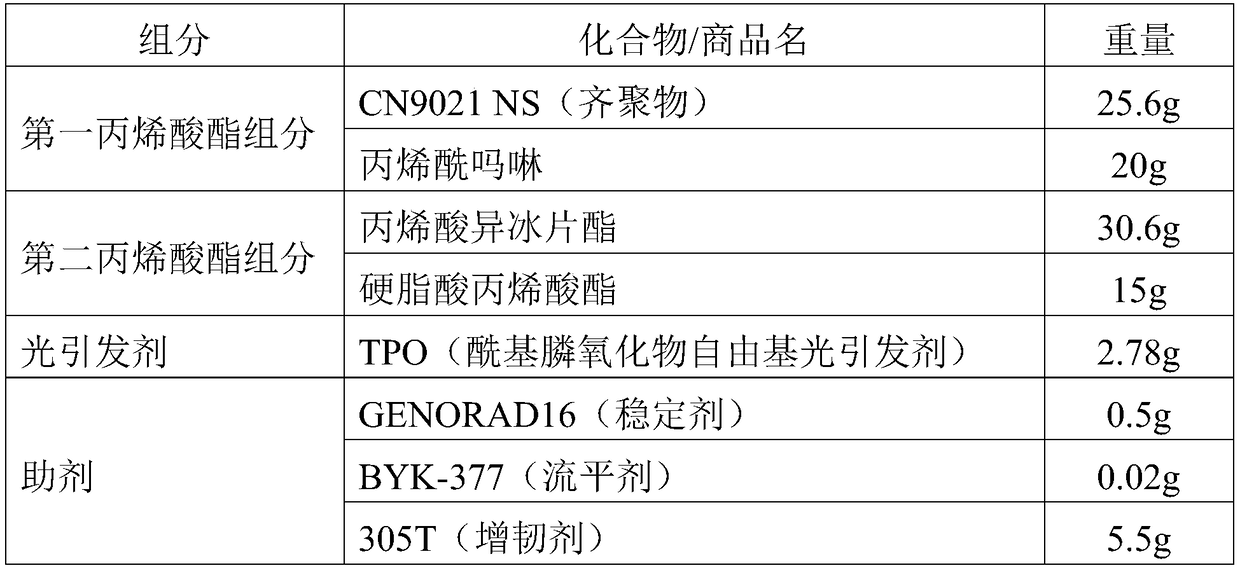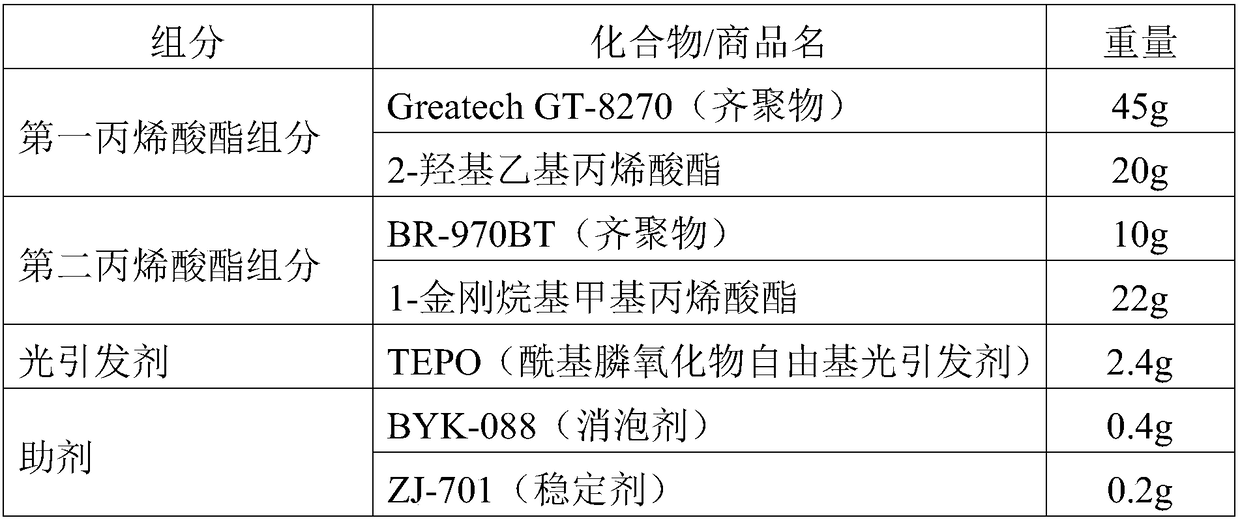Photocurable non-transparent material for 3D printing, preparation method thereof, 3D printing product and 3D printer
A 3D printer and 3D printing technology, applied in the field of 3D printing, can solve the problems of poor material stability, blockage of print head nozzles, and easy sedimentation, and achieve the effect of good printing fluency, not easy to block, and good quality.
- Summary
- Abstract
- Description
- Claims
- Application Information
AI Technical Summary
Problems solved by technology
Method used
Image
Examples
Embodiment 1
[0085] This embodiment provides a photocurable non-transparent material for 3D printing, which has the following composition in Table 1:
[0086] Table 1
[0087]
[0088] The preparation method of the light-cured non-transparent material for 3D printing is as follows:
[0089] (1) All components except the photoinitiator are placed in a glass container, and agitator is used to stir to obtain a uniformly mixed first mixture; then add a photoinitiator to the first mixture, and continue to stir until the photoinitiator completely dissolved to obtain a second mixture;
[0090] (2) performing primary filtration on the second mixture with a 0.45 μm glass fiber membrane, and then performing secondary filtration with a 0.22 μm polypropylene membrane (PP membrane) to obtain a filtrate;
[0091] (3) Under the vacuum of 0.1 MPa, vacuum and suction filtration for 1 hour to remove air bubbles in the filtrate, and finally obtain a light-cured white material for 3D printing, and it is ...
Embodiment 2
[0093] This embodiment provides a photocurable non-transparent material for 3D printing, which has the composition of the following table 2:
[0094] Table 2
[0095]
[0096] The preparation method of the 3D printed photocurable non-transparent material in this example is basically the same as that in Example 1, except that the components used are replaced accordingly, and in step (3), the method of heating and degassing is adopted, and step (2) ) The obtained filtrate was heated to 40°C for degassing, and the degassing time was 50min.
[0097] In this example, a light-cured white material for 3D printing is obtained, and it is a completely opaque material.
Embodiment 3
[0099] This embodiment provides a photocurable non-transparent material for 3D printing, which has the following composition in Table 3:
[0100] table 3
[0101]
[0102] In this example, the preparation method of the 3D printed light-cured non-transparent material is basically the same as that in Example 1, except that the components used are replaced accordingly, and the specific time for decompression and degassing in step (3) is adjusted to 2 hours.
[0103] What is obtained in this example is a light-cured red opaque material for 3D printing.
PUM
| Property | Measurement | Unit |
|---|---|---|
| flexural modulus | aaaaa | aaaaa |
| bending strength | aaaaa | aaaaa |
| flexural modulus | aaaaa | aaaaa |
Abstract
Description
Claims
Application Information
 Login to View More
Login to View More - R&D
- Intellectual Property
- Life Sciences
- Materials
- Tech Scout
- Unparalleled Data Quality
- Higher Quality Content
- 60% Fewer Hallucinations
Browse by: Latest US Patents, China's latest patents, Technical Efficacy Thesaurus, Application Domain, Technology Topic, Popular Technical Reports.
© 2025 PatSnap. All rights reserved.Legal|Privacy policy|Modern Slavery Act Transparency Statement|Sitemap|About US| Contact US: help@patsnap.com



